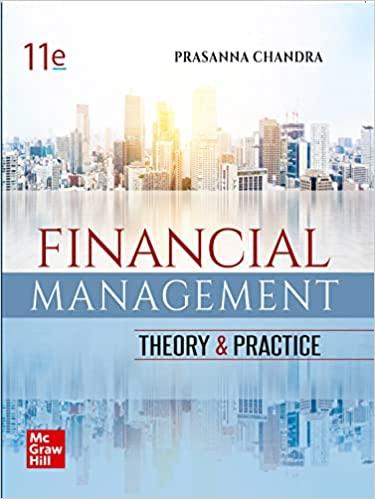
GROUP EXERCISE #2 One of the points of discussion between management and its consultants is the choice of the discount rate for this capital budgeting exercise. It was finally decided that the discount rate would be the company's WACC. Currently all of Highland's assets are exclusively financed by common equity and long-term debt (bonds). The company's balance sheet shows the following values: Bonds: $100,000,000 Common Equity: Paid-in Capital: $35,000,000 Retained Earnings: $ 9,000,000 Bonds: In early January 2010, the company issued 100,000 20-year non-callable bonds with an 8 coupon paid semi-annually, at a$1,000 par value. They currently trade at $1,150. This is the only bond issue the company has made to date. Common equity: Highland Beverages went public in 2005 and issued 1,000,000 shares at $35 each. It has not issued any new stock since then, nor has it repurchased any of its issued stock. The Highland stock currently trades at $54. Currently, the yield on US Treasury bonds is 3.57 , and the required return for a well-diversified stock portfolio is 9%. Highland Beverages' beta is estimated at 1.15. Highland Beverages' marginal tax rate is 40/ . Questions: 1) What are the relevant cash flows to consider for this project relative to the old plant? (Hint: use a timeline) 2) What are the relevant cash flows to consider for this project relative to the new plant? (Hint: same as above) 3) Calculate the proper discount rate to use for this project (2 decimals)? 4) What are the NPV and IRR of this project as of today, January 1st 2015? 5) Based on all the assumptions and on your calculations, should the company proceed with the new plant? Explain. 6) Aside from projected revenue and expense timing and amounts, tax considerations, or market data, which assumption could be easily changed that would probably modify your answer in 4) and 5)? Note: As usual, you must show all your step-by-step calculations along with all necessary written explanations showing the logical process by which you reach your answers. You will be graded based not only the accuracy of your numbers, but also on the logic and the clarity of your explanations, as you work your way toward your final answers. Please use only relevant information (i.e., all the information above may not be relevant to resolve bir avarcisel GROUP EXERCISE #2 One of the points of discussion between management and its consultants is the choice of the discount rate for this capital budgeting exercise. It was finally decided that the discount rate would be the company's WACC. Currently all of Highland's assets are exclusively financed by common equity and long-term debt (bonds). The company's balance sheet shows the following values: Bonds: $100,000,000 Common Equity: Paid-in Capital: $35,000,000 Retained Earnings: $ 9,000,000 Bonds: In early January 2010, the company issued 100,000 20-year non-callable bonds with an 8 coupon paid semi-annually, at a$1,000 par value. They currently trade at $1,150. This is the only bond issue the company has made to date. Common equity: Highland Beverages went public in 2005 and issued 1,000,000 shares at $35 each. It has not issued any new stock since then, nor has it repurchased any of its issued stock. The Highland stock currently trades at $54. Currently, the yield on US Treasury bonds is 3.57 , and the required return for a well-diversified stock portfolio is 9%. Highland Beverages' beta is estimated at 1.15. Highland Beverages' marginal tax rate is 40/ . Questions: 1) What are the relevant cash flows to consider for this project relative to the old plant? (Hint: use a timeline) 2) What are the relevant cash flows to consider for this project relative to the new plant? (Hint: same as above) 3) Calculate the proper discount rate to use for this project (2 decimals)? 4) What are the NPV and IRR of this project as of today, January 1st 2015? 5) Based on all the assumptions and on your calculations, should the company proceed with the new plant? Explain. 6) Aside from projected revenue and expense timing and amounts, tax considerations, or market data, which assumption could be easily changed that would probably modify your answer in 4) and 5)? Note: As usual, you must show all your step-by-step calculations along with all necessary written explanations showing the logical process by which you reach your answers. You will be graded based not only the accuracy of your numbers, but also on the logic and the clarity of your explanations, as you work your way toward your final answers. Please use only relevant information (i.e., all the information above may not be relevant to resolve bir avarcisel







